
Decluttering kitchen worktops and clearing away the chaos is a vital part of the process of decluttering a kitchen. Worktops or kitchen counters represent the largest horizontal surface area, besides the floor, so keeping them clear will have a huge impact on the sense of calm in your kitchen.
‘Review how frequently items are used and whether they need to be kept out all the time. Looking for broken or chipped items – mugs are a common example – can help make the decluttering process easier,’ says Professional Declutterer and Organiser, Lynda Wylie, founder of Tidy Rooms.
Once you are happy with your final edit, Lynda recommends using simple containers to group similar items together. ‘This ensures they look neat and are easy to move around for cleaning and tidying,’ she explains.
Declutter kitchen worktops
A clutter-free kitchen not only looks fantastic and is a more pleasant space to be in, but also makes cooking and cleaning a breeze. Checking out kitchen storage ideas focused on worktop organisation can help fast-track the process but first, you need to learn how to declutter your kitchen worktops in just eight easy steps.
1. Clear down your worktops
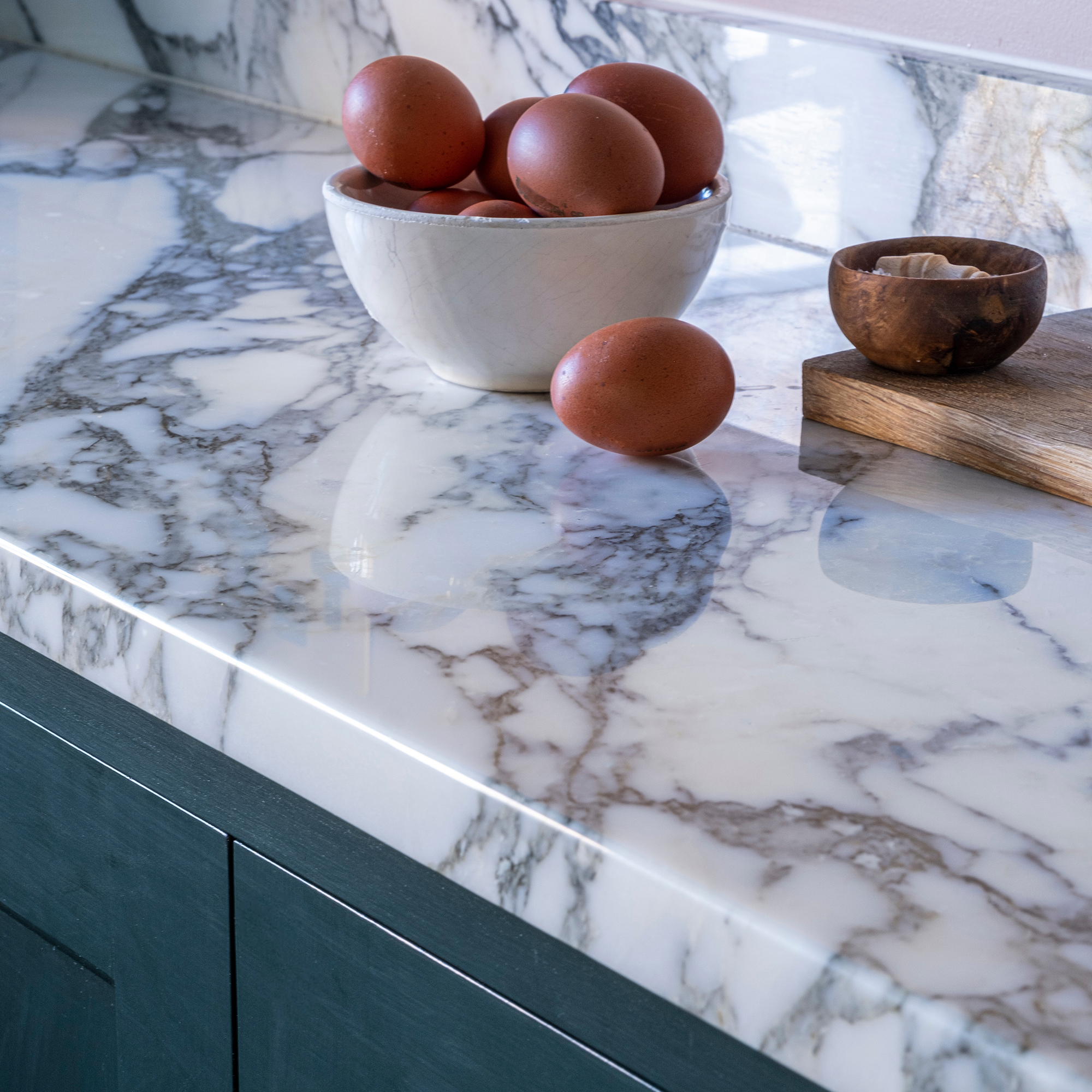
Begin by taking everything off the worktops and putting them on a nearby table or onto a clean picnic blanket (or similar) on the floor. Clearing the decks in this way will allow you to appreciate how much space you have got to play with and help stop you giving up halfway through the process!
It also lets you see exactly what you’re dealing with in one glance and helps identify the main culprits cluttering up your worktops. ‘One of the most frequent types of clutter I come across on a kitchen counter is unloved and forgotten kitchen gadgets like food mixers, slow cookers, and coffee machines,’ says Lynda Wylie, of Tidy Rooms. ‘These are often big and bulky, gathering dust on a counter and taking up prime space. Assess each one and consider when it was last used and whether it could live in a cupboard and be lifted out when needed.’
Before you do anything else, take the opportunity to clean your kitchen worktops, getting right into the corners and taking a brush to any dirt traps at the back.
2. Eliminate papers
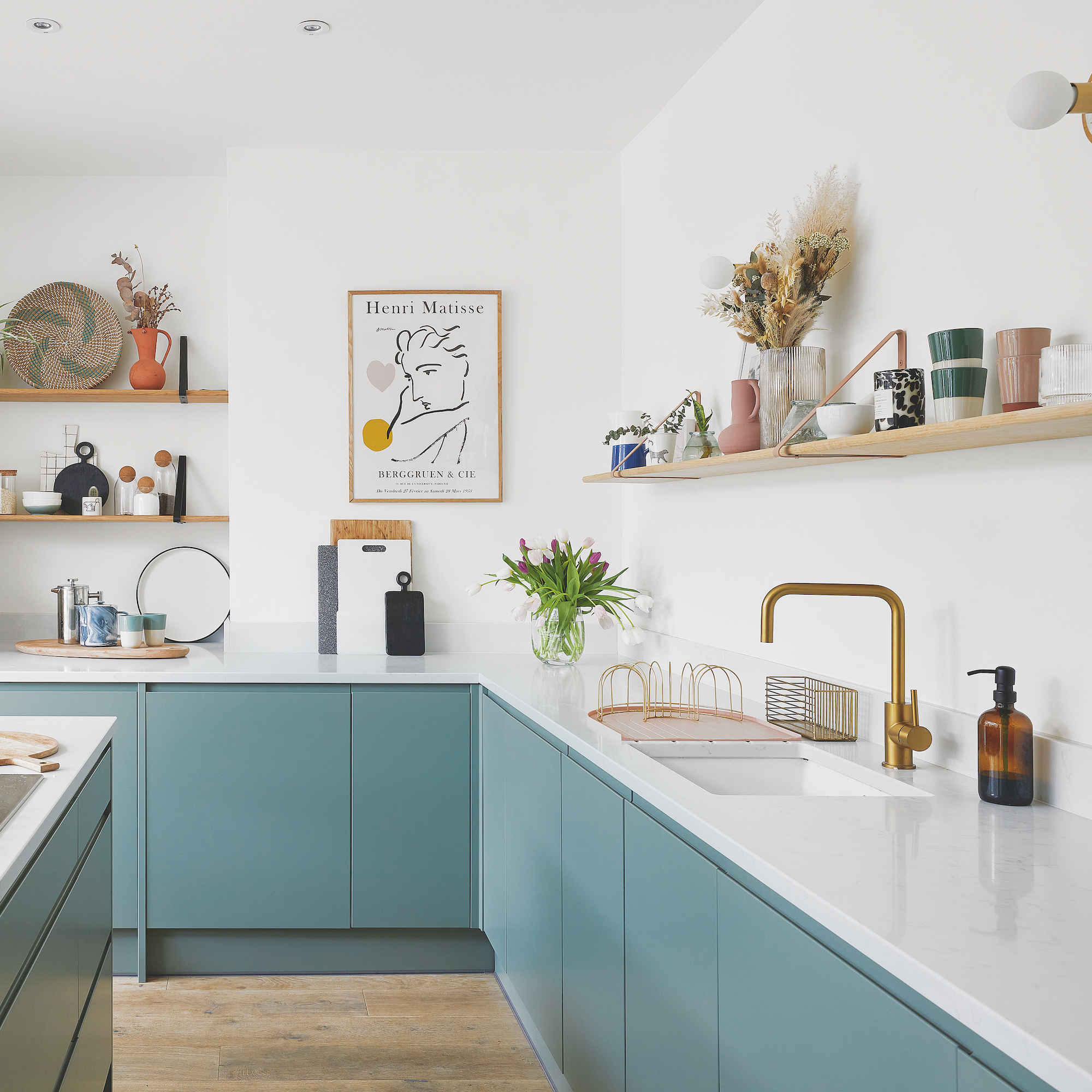
Now is the time to be brutal and get rid of any papers that have outstayed its welcome on your kitchen counters. Take a good hard look at everything laid out on your table/floor and take no prisoners in the pursuit of whittling it down.
There will probably be actual rubbish, like pizza flyers and old homework that can easily go in recycling but there will also be a tonne of ‘stuff’ that had no business being on your worktops in the first place. There will also be plenty of detritus that’s just in the wrong place and needs returning to its rightful home.
‘All sorts of random bits and bobs end up cluttering worktops, like loose change, pens, sweets, toys, screws… the list is endless! If it’s obvious who it belongs to, ask them to put it away. If there are other similar items like it elsewhere and it would take less than a couple of minutes to put it away, do it now,’ says Lynda. ‘You’ll feel great for tidying it away and you’ll know where to find it when you need it.’
3. Create space in your cupboards
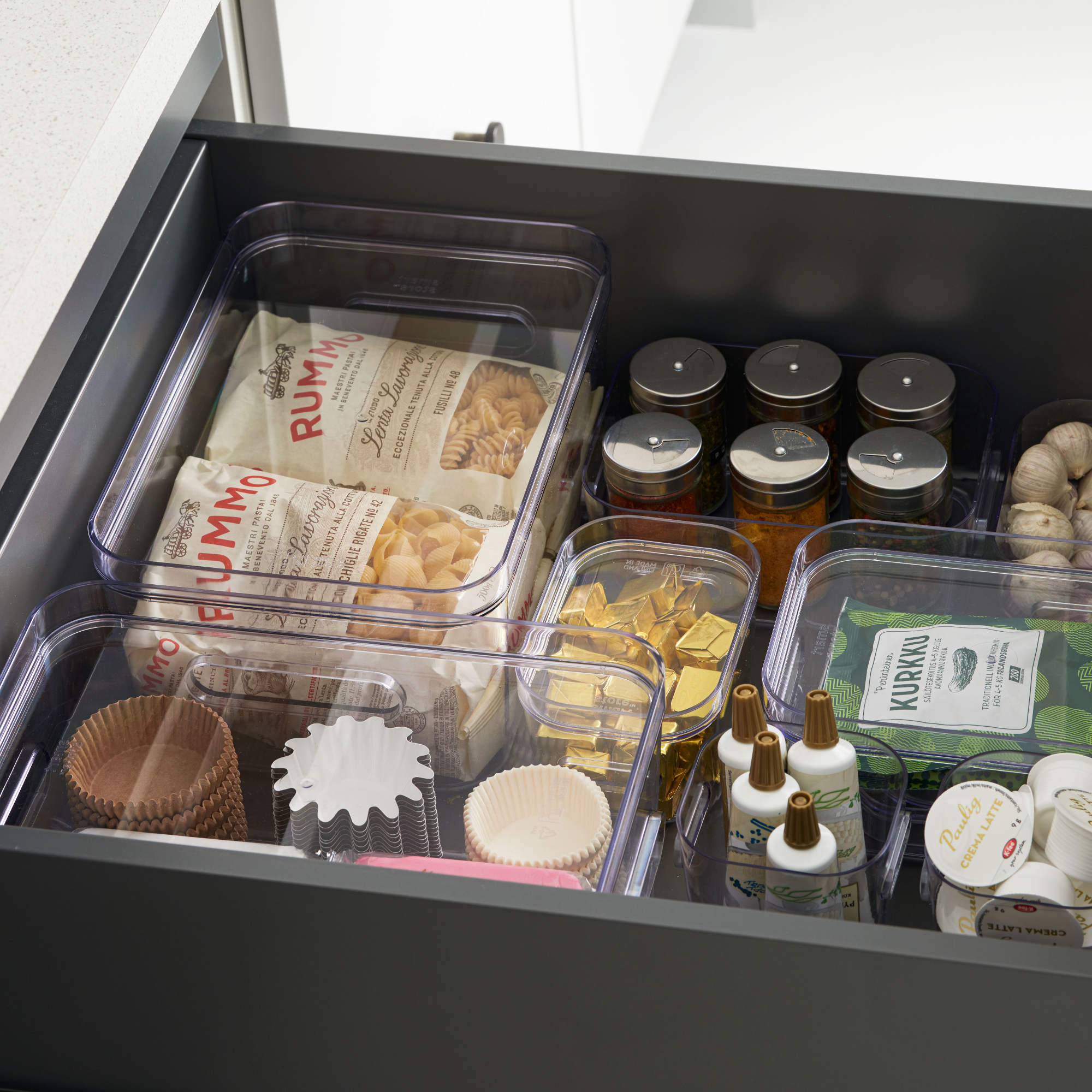
Yes, there will be things you can dispose of or rehome elsewhere in the house, but there will also be several items that need a proper place within your kitchen. ‘The easiest way to declutter kitchen worktops, is to sort out a cupboard or two as part of the process,’ says Mimi Bogelund, Master KonMari Consultant and founder of The Organised Home & Life.
‘Let’s say you have got, tea, coffee and sugar out on the counter – now get all the teas, coffees and sugars out from everywhere. Group together and decide what you no longer want or is out of date. Get rid of big near-empty cartons and any other packaging taking up space. You’ll now find there’s cupboard space for the bits you had on the counter. You can apply this to anything like oils, spices, drinks, and cleaning items.’
By learning how to organise kitchen cupboards, you can generate a lot more space for items that are currently overflowing on the worktops.
4. Utilise vertical space
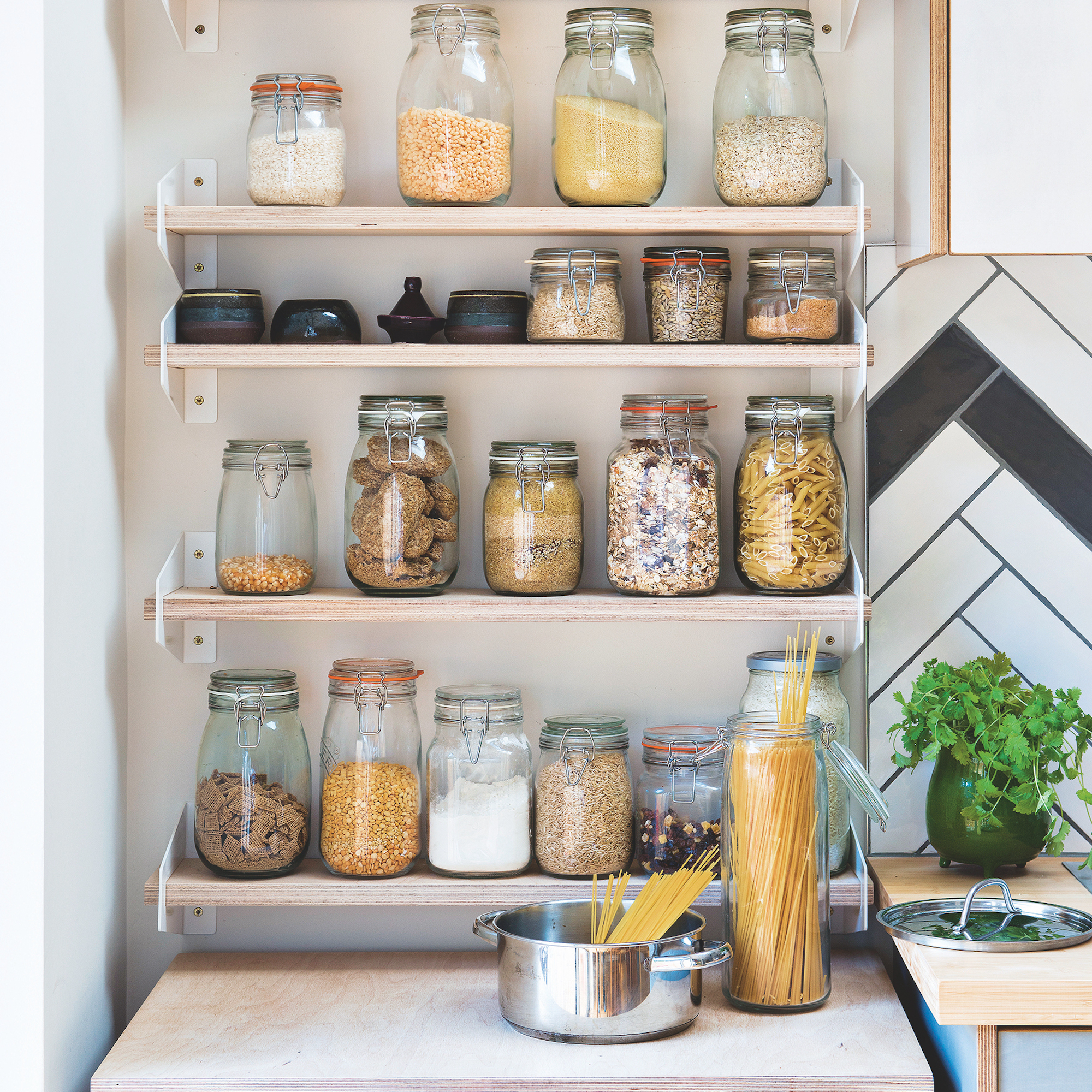
Shelves, hooks, utensil rails or magnetic strips can all be used to maximise the vertical storage potential between worktops and wall cabinets. ‘Splashbacks can be a great use of space if you want to try and keep items off the counter,’ agrees Siân Pelleschi, President of APDO and founder of Sorted! ‘However, it’s important not to overload it with too much or that sense of space can be easily lost as your eye wanders around the busy walls.’
Think carefully about what you really need to have to hand. ‘For instance, it can be really useful to have easy access to ladles, knives and spatulas for cooking and having them close to where you’re using them can save you time in rooting around in a drawer and free up the drawer for other things such as spices for instance,’ she adds.
Siân also recommends using the underside of the cupboards or shelves in a kitchen for mugs, glasses or kitchen rolls. ‘It is a great way to have easy access to the nicer-looking items in your kitchen, while keeping those worktops clutter-free,’ she explains.
5. Tidy up tech

Worktops usually have a good supply of electrical sockets above them, which inevitably makes them a natural charging point for your family’s devices and peripherals. ‘If you’re re-doing your kitchen, I always recommend including a dedicating charging cupboard or drawer with plenty of power points built in behind closed doors,’ says Siân.
In the meantime, try to find spare sockets elsewhere and banish charging on worktops altogether. If that’s not possible, Siân suggests placing a basket on your worktop, just below the socket, so at least the trailing cables and devices are less obvious.
You can also use cable ties to gather up other trailing cables that are cluttering your countertops. For example, on kettles and toasters etc. Fold the cable as short as possible, tie and then tuck the spare cable behind the appliance, taking care to ensure they’re away from direct heat. Some small appliances have cable tidy clips built into the back or underside for this purpose.
6. Sort out your sink area
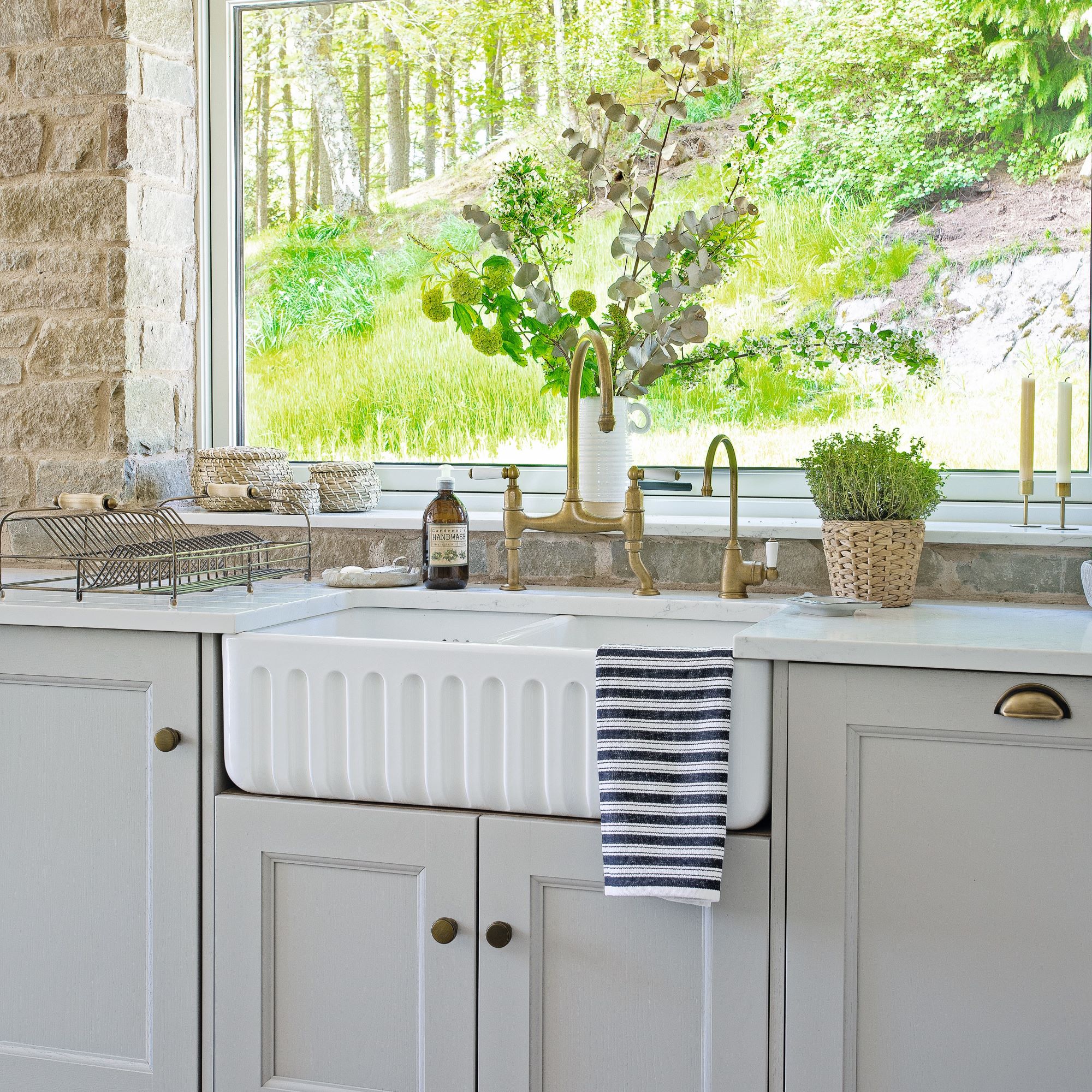
Piles of dirty dishes, especially those pots and pans that aren’t dishwasher safe or don’t fit inside the machine can quickly lead to countertop chaos. Do the washing up as soon as you can, rather than leaving it to linger. Pans only need to soak for the time it takes you to eat dinner, not three days!
Even clean crockery that’s been left to air dry can ruin the clutter-free aesthetic you’re seeking. If you do prefer to leave dishes to dry, try to pick a regular time each day to pack it all away. First thing in the morning or last thing at night, for example.
Washing up brushes, hand soap and cleaning cloths can also cause messy sink areas. ‘Keeping the sink area clear is all about prioritising what is allowed out, and what can be hidden away,’ says Simon Glanville, managing director, A Place for Everything. ‘So, items you use frequently every day, like the hand soap and the dishcloth, should be easily accessible – you can use something like a multi-layered organiser or wall-mounted shelf to keep the counter-tops around your sink clutter-free.’
For items that can be stashed away but still kept close to hand, like the scouring pad you only use on seriously burnt-on food, work that under-sink cupboard. ‘There are hanging basket options you can use under the sink for instance that hang on the inside of the door,’ says Simon.
7. Zone your surfaces

Create dedicated zones on your worktops according to different tasks so that the things that are left out on display are well organised and everything has a designated home. A coffee station might include your coffee maker, mugs, and tea bags, while a prep area could host the chopping boards and knives.
To ensure each zone is kept as tidy as possible, you may need to invest in specific storage. For example, if you have an area where you deal with household bills and all the paperwork that comes with busy family life, choose office-appropriate storage.
‘Stacked in-trays can work well, as they don’t take up much space and you can label each tray with ‘new’, ‘to process’ and ‘to file’, allowing you can easily keep track and, eventually, process the paperwork out of the kitchen,’ says Simon Wigzell Personal Organiser and owner of Let’s Get It Sorted.
8. Keep up the good work
Once you have cleared away the genuine clutter and reorganised what’s left, it’s worth establishing a daily or weekly clear-down routine that will help stop the clutter creeping back in. ‘The key to staying organised is about process – if you can create and adopt a process that you can follow then this will really help stop the clutter from building up,’ says Simon Wigzell.
‘Try and get into a weekly habit of clearing away anything that doesn’t belong at all, relocating anything in the wrong place, and sorting out any lingering post and paperwork. Little and often will really help.’
FAQs
Should kitchen counters be empty?
A kitchen counter with a significant portion of clear space is ready to use and a calm, clean space to enjoy without visual clutter that demands our attention. So while they don’t need to be completely empty, it’s definitely beneficial if you can see the majority of your surfaces.
‘Households are usually made up of individuals with different clutter tolerances so some people prefer nothing but the essentials left out, such as everyday kitchen equipment like a toaster, kettle and microwave, while others are comfortable with more things like cooking oils and spices, medicines and vitamins,’ says Lynda Wylie of Tidy Rooms.
The size of the counter and the available storage space are other defining factors as not every kitchen has space for items to be stored out of sight. ‘Simple adaptations like open shelves, under cupboard hanging shelves and hooks all help lift things off the counter and give them a specific home,’ adds Lynda.
How to keep stuff off a kitchen counter?
The short answer is to not put stuff on the kitchen counter in the first place, but that’s easier said than done. If you really want to keep kitchen counters blissfully empty, then you must either get rid of your stuff or find another place for it to live. Ask yourself, “can this item be kept somewhere else without impacting cooking efficiency?”.
‘If you love cooking, then you’re likely to have all manner of spices, oils and vinegars and utensils – but they don’t need to be all over the counter! Find extra surface space by elevating and adding a shelf above the worktop, or invest in a slimline kitchen trolley that can be wheeled close to where you need it and then tucked out of the way again,’ suggests Simon Glanville of A Place for Everything.
Take your kitchen counters from chaotic to calm by following these eight steps and enjoy a more enjoyable place to cook and entertain, with the added joy of knowing exactly where everything is!







